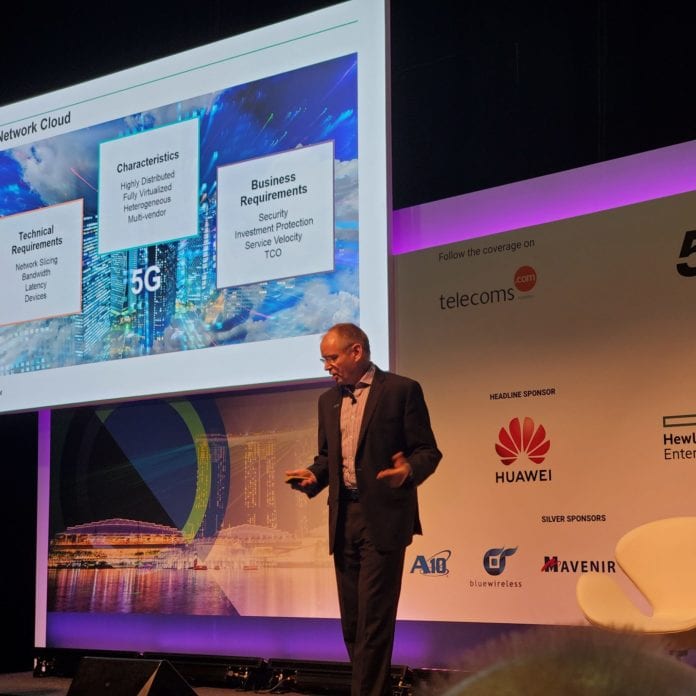For 5G profitability, telcos need to control capital spending
Early commercial 5G deployments are focused on pushing higher speeds to consumers with compatible devices. But, for the most part, operators have yet to delineate new service plans that reflect the massive spend that will go into building out 5G. And, with full-on network slicing and the enterprise-enablement opportunities that come with it, still on the horizon, what is the path to 5G profitability?
“I don’t think anyone really knows where the revenue is going to come from,” Claus Pederson, HPE’s vice president, Global Telco Segment and NFV Solutions, said during a recent presentation during 5G Asia at the Marina Bay Sands Convention Center in Singapore. But what he does know is, “The infrastructure clearly needs to be implemented in a more efficient ways…to make it cost-efficient enough for operators.”
The big picture here is the IT-ification and cloudification required as telcos transition from LTE to non-standalone 5G NR and, ultimately, to standalone 5G. The introduction of network functions virtualization and software-defined network is giving way to cloud-native network design that relies on general-purpose IT infrastructure running largely open-source based software, replacing the proprietary boxes of previous cellular generations and the vendor lock-in that comes with them. This new IT-centric network, in theory, gives telcos the same flexibility and service delivery velocity as webscale players, although that also requires an internal restructuring to a devops model. That new network becomes profitable when network slices, spanning the cloud, core and edge, are automatically provisioned to meet specific enterprise application requirements, connecting any device to any cloud-based service, if you will.
And by looking and working more like webscale companies, telcos may be able to navigate 5G more effectively (profitably) than LTE wherein over-the-top players successfully monetized services riding on networks they didn’t spend a dime to build.
But, as carriers do build out 5G, the network is highly-distributed, fully-virtualized, heterogeneous and multi-vendor. “It’s a very complex model for deployment,” Pederson said. He made the point that “telco networks are inherently different” from webscale companies that centralize compute and storage in data centers whereas telcos have to do that as well as move that functionality closer to the end user. Otherwise, “All the telcos would be trying to out-Google Google.”
Telcos need to prepare for the complexity that comes with “deploying an application in a centralized data center, in a central office, at an edge site…There are fundamental differences in the physical environment.”
This variability in deployment model also parallels variability in vendor dynamics. “Big service providers are multi-vendor,” Pederson said. “That’s, again, not how telco infrastructure traditionally is built. There’s a necessity to have a multi-vendor network. You have to be able to balance different vendors. That means there’s an incredible need for standards.”

